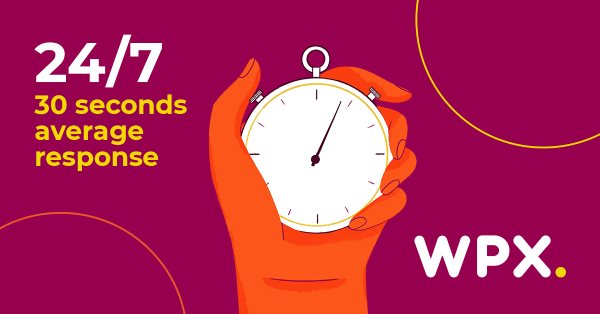
It is likely that you are reading this on a mobile device. If the page structure or readability is unsatisfactory, you will likely seek information elsewhere. Now, imagine the potential loss of users if your website is not optimized for mobile.
When we say ‘optimized’, we imply that your website should have an impressive appearance on smaller screens, in addition to loading quickly and being user-friendly for navigation and interaction. If you can achieve this for a mobile device, then your website will also have an excellent appearance on a full desktop screen.
Why mobile-first design is essential
More than the number of people with access to PCs and laptops, nearly 84% of the global population possess a smartphone and frequently own multiple types of mobile devices.
Many individuals rely on smartphones as their only computer, using it as their sole means of accessing the internet. In fact, it is often the only computer they have access to. Regardless, most people always have their smartphones with them at all times.
It comes as no surprise that there has been a significant increase in mobile traffic in recent years. The usage of mobile devices to access the web has exceeded that of desktop computers, accounting for more than 54% of all web traffic, while desktop computers make up around 43%.
If your website is not optimized for mobile devices, you could potentially lose a significant number of users. Due to the abundance of content available, your potential audience (including customers) are unlikely to tolerate a subpar user experience and will likely search for alternatives elsewhere.
What does responsive web design mean
Responsive design ensures that a website adjusts to fit any screen size and displays information clearly. It applies to various devices like phones, tablets, desktops, and smartwatches. When browsing a website, its adaptability to your screen size should be evident. On larger screens, elements scale up to a certain extent to avoid looking excessively big while maintaining ease of navigation.
When using mobile devices, the content of your site should scale down for smaller screens without rendering it unreadable or unable to interact with.
Websites that achieve that delicate balance are regarded as responsive. Both web design and development are closely intertwined in this aspect, as the site’s graphical elements must be able to adapt. Behind the scenes, CSS and stylesheets dictate how the website will appear on various screen sizes.
In the past, the focus of website design used to be centered on the desktop experience, with responsive design being less important. However, as mobile traffic has become more prominent, the approach to design has shifted accordingly. Consequently, the term ‘mobile-first’ is frequently mentioned in discussions within the field of web design.
It is crucial to comprehend that there exists a distinction between responsive and adaptive design. The concept of adaptive design encompasses the creation of various iterations of a solitary webpage and delivering them based on the devices used by visitors. This approach to web design is perceived as outdated in today’s day and age, as responsiveness is the more efficient choice.
Ways to optimize your website for mobile devices
Having established the importance of preparing your website for mobile usage, we will now proceed to provide practical guidance. In the following sections, we will guide you through the essential components of developing a mobile-friendly website, starting with straightforward aspects before delving into more technical complexities.
Let’s get started by taking the time to implement as many of these methods as possible. This will improve the chances that your website performs well on all devices and is favored by Google’s mobile-first index.
1. Test your site using Google’s mobile-friendly tool
Before taking any additional steps, it is wise to assess the current state of mobile-friendliness of your site. This assessment will facilitate your focus on particular sections of your site that require improvement and provide valuable insights on how enhancements can be made.
An effective method to achieve this is by using your website on various devices one by one. Utilize your personal smartphone or tablet to access the site and observe its appearance and usability. By doing so, you can gauge the loading times, evaluate the effectiveness of the design on smaller screens, verify the readability of the content, and assess the ease of navigation.
After rephrasing: After going through the thought process, you can further enhance your evaluation by utilizing a specialized testing tool. Luckily, Google has developed a tool that is available for free, and it will indicate whether your website meets the necessary criteria for mobile pages. This tool is appropriately named the Mobile-Friendly Test tool.
If the page you are testing is mobile-friendly, you will receive a positive result from the tool. However, if Google detects possible improvements, it will indicate the changes you can make to enhance the mobile experience.
If your website receives a positive result overall, it may still encounter problems loading specific assets. If this occurs, you will be notified about page loading issues. By clicking on the notification, you will be presented with a list of assets that the testing tool was unable to load on mobile devices.
At this stage, you can address each problem mentioned one by one. For instance, you have the option to modify your robots.txt file to grant Google access to blocked files, or rectify any redirection errors.
2. Correct size of text and photos
To ensure a professional and seamless design, it is crucial to properly size the text and pictures for all devices. This includes aligning and formatting all visuals and texts, as it greatly impacts the overall user experience for customers.
3. Search function
If your buyer or next potential client spends a significant amount of time on your website, they will definitely seek out your search button. Customers anticipate prompt and tailored outcomes within easy reach. Neglecting to enhance your search functionality and its mobile experience will result in missed financial opportunities.
4. Fully responsive web design
To effectively optimize your site for mobile devices, begin by selecting a fully responsive web design. Additionally, ensure to compress images and identify any features that are incompatible with mobile viewing.
5. Accounting for different screen sizes
When designing a user interface, it is important to consider that people use mobile devices with varying screen sizes. To ensure that your website content is suitable for different screen resolutions, you can customize it using a tool such as Media Queries. This not only enhances the overall user experience but also increases customer satisfaction, as it caters to the different screen sizes of your mobile site visitors.
6. User experience
The key is to prioritize user experience and conduct extensive early testing. By delivering early calls to action (CTAs) and offering user-friendly forms, including graphics-based ones, interaction becomes simpler, particularly on mobile devices.
7. Simplicity in design
When consumers use mobile devices, they generally aim to be effective and speedy in their website usage. By keeping your site design simple, not only can you provide an easier experience on a smaller device but also shorten your site’s page load times. Mobile usage tends to be impatient, meaning that the site should be efficient since there are numerous other phone features that may divert attention.
8. Delivering immediate answers
People using mobile devices require fast answers and have shorter attention spans compared to when they browse on desktop computers. Therefore, when designing a mobile website, the top priority should be to deliver user answers quickly. Consequently, many companies now create separate websites specifically for mobile devices.
9. Compatibility with major devices
It is important to have a website that is compatible with all major devices, both current and past. In addition, it is crucial to ensure that the website loads quickly on a desktop computer because if it takes a long time to load on the computer, it will take even longer to load when customers are searching for your service in a crowded subway station with flickering 3G.
10. Page loading speeds
In order for a website to be effective on mobile devices, it is crucial for it to load quickly. The speed at which the pages load is the most significant aspect that impacts user satisfaction and influences various metrics, including bounce rate and conversions.
11. Site clarity
The number of people purchasing from their mobile phones is increasing, and most content is being accessed and shared through mobile devices. When it comes to mobile, it is important to prioritize simplicity. Ensure that your website is optimized for fast loading and that your web host can handle the amount of traffic. Google gives preference to mobile-friendly websites that have a minimal amount of pop-ups.
12. Time
Users are consistently exposed to a large amount of content on mobile devices. A higher amount of time spent on your page enhances the likelihood of achieving conversions. Clean graphics, a fast-loading page, and a clear call to action are essential for the success of any mobile page. Additionally, it is crucial to provide an easy method for users to contact your company if necessary.
13. Use custom CSS to make your website responsive
When it comes to creating a mobile-friendly site, a significant aspect of the process is utilizing CSS. It is astonishing to see how beneficial even a basic understanding of CSS can be in implementing responsive web design.
An example of using CSS to implement what is known as ‘media query’ ranges is by using media queries (or responsive breakpoints). These queries allow browsers to load different layouts for a page depending on the screen size. Media queries play a crucial role in HTML, CSS, and JS libraries like Bootstrap.
In addition to that, there are other methods by which CSS can be utilized to enhance the responsiveness of your website.
- Creating a CSS grid layout. CSS grid layouts, such as the one that Bootstrap provides, offer a simple way to help you adjust designs to various screen sizes. Having a layout with well-defined elements can enable you to configure how they appear and how much space they take with each size of screen.
- Using size percentages for layout elements. As you might know, CSS enables you to set the height and width of elements using pixels and other units of measurement. To make your website more responsive, we recommend that you use percentages. That way, elements such as buttons should adapt seamlessly as screens get smaller.
- Adjusting font sizes using media queries. Images and other visual elements on a page shouldn’t be the only things that scale for smaller screens. Text also needs to be responsive or you can end up with a mobile site where users can only see a word or two on their screen before needing to scroll down.
- Controlling the spacing between elements. CSS enables you to determine the spacing between elements so there’s enough whitespace even when pages scale down.
Designing a fully responsive website can be easier than you think if you are comfortable with HTML and CSS. However, if you opt for a Content Management System (CMS) like WordPress, the process becomes even simpler as you rarely have to handle code, even for responsive design.





